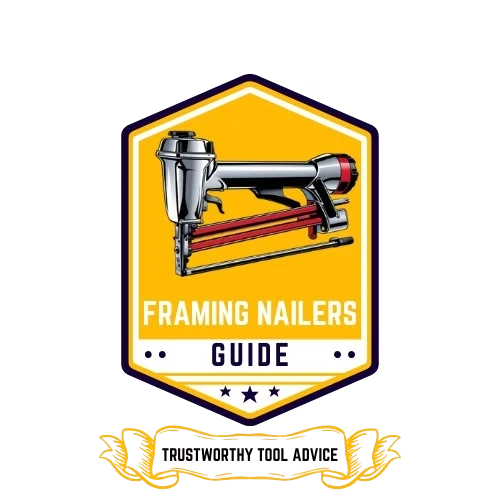Table of Contents
Last Updated on December 26, 2024 by John Patterson
So many of us know what a router and a jigsaw are, right?
They’re both powerful tools used for cutting into materials.
For those of us who have used them, only they’ll know which one is a better power tool.
To start off, I’m going to give you some information on a router and jigsaw, along with their uses, pros, and cons.
Later, I’ll make the router vs. jigsaw comparison guide so you can know the difference.
So, you’ll know which one to use when it comes down to jigsaw vs. router.

Router vs. Jigsaw: Differences Explained
So here are the key differences we explained to you today.
Router Saw Uses, Pros, and Cons

Let’s talk about the router first. A router is a power tool used to hollow or carve out inside material that is hard as wood or plastic.
These power tools can be used handheld. But sometimes, it’s fastened to a router table.
These general routers look like hand planes with a broad base and thin blades. This is the original design, and it’s the type that can be used handheld. The other design of the router is the one that runs with an electric motor spindle.
Even though the electric one is more common than the handheld one, there are still some advantages the handheld one provides that the electric one can’t.
The tool works with high-speed precision when cutting and trimming or even shaping different materials.
The router works best with more brittle material, especially in small sections. This way, they run rapidly even if you’re dealing with a small router.
Aside from that, it is possible to cut into metal, like soft aluminum or rigid metals, or other difficult materials like kevlar, hard plastic, fiberglass, or graphite.
There are various kinds of routers. Some are plunge routers, combo routers, laminate trimmers, CNC wood routers, fixed base wood routers, variable speed routers, etc.
Uses
- Woodwork or cabinetry
- Milling
- For trimming, shaping, and finishing materials
Pros
- It works at rapid speed
Cons
- It doesn’t perform well on tough materials as it does on weaker ones
- It needs to be held in place with both hands so it stays in position
Jigsaw: Uses, Pros, and Cons

A jigsaw is also a powerful tool, but it has a few differences compared to the router. This tool is made of a saw blade and an electric motor.
It’s used to cut up angles, whether they are vertical or even if they’re up to 45 degrees. They cut angles to make miter joints.
You first need to attach the blade to the tool to use a jigsaw. These blades are found in stores as accessories, which means you can choose a blade to your liking and adjust it to the jigsaw tool.
Some jigsaws need you to screw on the blade, while others provide a snap-on option.
When choosing the right blade for your material, consider the tooth style on the blade. Depending on that, you’ll get the right speed, the precision of cuts, and the best performance.
For example, the ground-toothed blade is perfect for cutting into wood or plastic, while the wavy-toothed blade is perfect for metal.
Being careful while choosing the right blade for the suitable material ensures good performance and a longer blade life.
The different blades you can use with your jigsaw are high-carbon steel blades, high-speed steel blades, bi-metal blades, tungsten carbide blades, diamond grit blades, etc.
Uses
Pros
- You can change blades easily on the jigsaw
- Can cut on angled material too
Cons
- It’s hard to control the jigsaw because the blades are thin, small, and weak, especially since the lower end of the jigsaw is open and unsupported
- It would be best if you always bought new sharp blades to get good-quality cuts
Router and Jigsaw: Which One Is Better?

In a world where we’re dependent on technology, there are inventions to help society progress because necessity is the mother of invention.
Aside from technology, natural items were also essential. Wood, for example, has come a long way from being hand carved to having several available carving tools.
The router and jigsaw are two of them. But in this argument, I would like to give my opinion that the jigsaw is the better tool for this new decade.
The router has been helpful for an extended period, but the jigsaw seems more versatile and efficient.
Above I’ve given information on the two tools, what they look like, how they work, and where they’re used. We can easily assume the jigsaw is better. The jigsaw is a creation of art, as professionals would like to say.
And the jigsaw power tool is created for flexibility and easy use. One of the major advantages is the whole blade-changing part. You can choose whatever blade you like, and all of these are found in stores or online.
Frequently Asked Questions (FAQs)
Here we have some of the most commonly asked queries regarding router vs. jigsaw:
Question #1. Can I use a router to cut wood?
Answer: Yes, using a router to cut wood is possible. You don’t even need to buy an expensive CNC router, either. Just get the proper jigs and sleds, and you can easily cut circular holes or straight edges into the wood.
You might need to make more cuts with more depth than usual, which has a bit of a risk of overloading. So make sure you have a good quality router with the proper bearings to lower that risk.
Question #2. Can I router plywood?
Answer: There are different types of plywood. But a heavy-duty router should work fine on the plywood edges, although the plywood glue might weaken the router’s work compared to hardwood. It’s wiser to take lots of small passes and bits of wood out little by little instead of routing in one go.
It would be best to consider the direction you’re routing because it could be an essential factor. For example, if you’re routing the outer edges with a handheld router, then it’s best if you route counterclockwise.
Question #3. What is the best jigsaw?
Answer: The best jigsaw currently is the DEWALT 20V MAX Jig Saw, Barrel Grip. This jigsaw is battery-powered and comes with comfortable barrel grips and bright LED lights. It offers professional-quality performance.
Question #4. Can you cut a 2×4 with a jigsaw?
Answer: Yes, you can cut a 2×4 with a jigsaw tool. A jigsaw is a tool for precision, after all. It’s perfect for cutting out thin designs on the material. The right way to cut a 2×4 with a jigsaw is to do it slowly and patiently.
Choose the right blade and ensure you’re in control of the jigsaw. Preferably, a long, thick, and stiff blade with a tooth count of 10 or less would be good to work with.
Question #5. How thick can a jigsaw cut?
Answer: Jigsaws can be cut into various materials like plywood, lumber, metal, plastic, etc. It cuts curves, circles, or in a straight line. But how thick it can cut through depends on your blade. The best jigsaw obviously can’t cut into anything thicker than its blade’s length.
Another factor is the fewer teeth on the blade, the thicker material it can cut. The general blade is about 4 inches so you can expect a cut as deep as 3 inches.
In Conclusion
Well, you’ve read the details on each power tool and the comparison, which seems to be better.
It’s been proven jigsaws are way more user-friendly. They’re versatile, make cleaner cuts, are easier to set up, have all of their accessories available at all shops, and are safer to handle and more in control compared to the router tool.
Despite the better choice, each tool has its own purpose and is made to work the way it should and on the materials.
Nevertheless, I hope our router vs. jigsaw guide could be of some help and aid you in making a decision.

